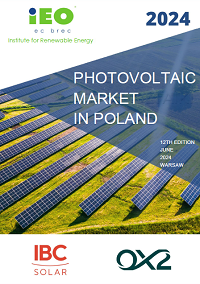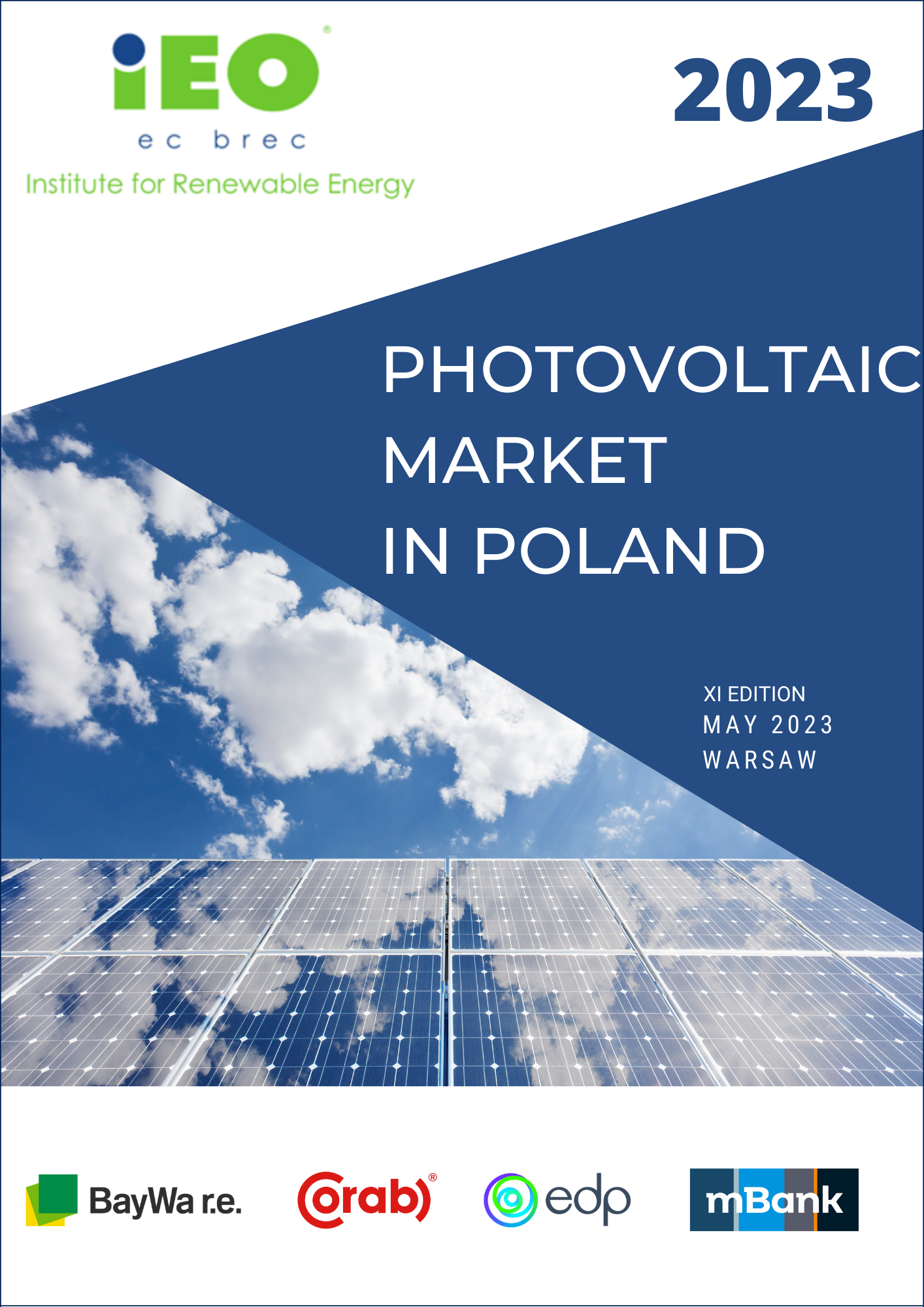SUMMARY - „PHOTOVOLTAIC MARKET IN POLAND 2025”
- Details
At the end of Q1 2025, Poland reached 21.8 GW of installed PV capacity, of which 59% was microgeneration units and 41% was PV farms and small systems. The market has undergone a significant transformation – large PV farms above 1 MW have taken over the dominant role, accounting for half of new capacity. Photovoltaics accounted for 64% of Poland's RES capacity, and its share of RES power generation rose to 31.5%.
Poland remains at the forefront of the EU in terms of PV capacity increase, ranking 5th in 2024 with an increase of 3.7 GW. Globally, it ranked 11th. Despite a decline in momentum in 2023-2024, Poland's PV sector is growing at a rate similar to mature markets such as Germany and Spain. Industry forecasts indicate that up to 38 GW of PV capacity could be reached as early as 2028, government forecasts (the National Energy and Climate Plan) indicate that 38 GW of system capacity could be reached in 2035. Poland also stands out for its high rate of installed PV capacity per capita at the end of 2024 – better than in the US or China.
SUMMARY - „PHOTOVOLTAIC MARKET IN POLAND 2024”
- Details
Polish photovoltaics reached an installed capacity of 17.08 GW at the end of 2023, and 17.73 GW at the end of the first quarter of 2024. Compared to 2022, the growth of new capacity in absolute terms was similar at around 4.6 GW, but the structure of the market has changed markedly. The proportions of installed microgeneration installations (up to 50 kW), small installations (above 50 kW) and installations above 1 MW identified as "farms" have changed. Turnover and revenues of companies at different stages of the supply chain have also changed.
PV projects in Poland
- Details
The Institute for Renewable Energy has prepared the latest database of photovoltaic projects in Poland. As of Q3 2023, the database contains 6,929 projects with connection conditions issued, with a total capacity of more than 18 GW. Compared to the previous database with information at the end of Q1 2023, there was a 41% increase in the number of projects and a 46% increase in the total capacity (during the six months, the full capacity of valid conditions for connection of photovoltaic installations to the grid almost tripled).
A large number of valid grid connection conditions and refusals for new projects
The figure below shows the distribution of photovoltaic projects with still valid grid connection conditions issued charted from November 2021 to October 2023, along with information on the connection agreements concluded.
SUMMARY - „PHOTOVOLTAIC MARKET IN POLAND 2023”
- Details
Achievement of Polish photovoltaics – key data
The IEO report „Photovoltaics market in Poland 2023” shows that the year 2022 was very good for the photovoltaic sector in Poland, better even than the record year of 2021. In 2022, photovoltaics was yet again the leader and the main driving power for the increase in RES market in Poland. According to data of the Energy Regulatory Office, the accumulated power installed in PV at the end of 2022 amounted to more than 12.4 GW, which in comparison to 2021 (7.7 GW) meant a record increase of more than 4.7 GW in new power and constitutes a record 61% increase in market growth.
At the end of the first quarter of this year, the total power of PV installations exceeded 13 GW, with the share of prosumers being 74%, the share of small installations (50–1000 kW) 21%, and large PV farms 5%. The importance of energy from PV installations in energy production in Poland increased significantly. The share of PV energy in electric power from RES increased from 3% in 2019 to more than 23.3% in 2022 and 4.5% in the total generation structure (four years ago, it was only 0.4%).
At the end of 2021, the power installed in European Union countries in photovoltaics amounted to 198 GW, which means an annual increase by 36 GW. EU countries achieved a 22% increase in PV installed power in comparison to 2021 – almost three times lower than in Poland. In 2022, Poland was ranked again on the second place, after Germany, in terms of increase in the PV installed power in the European Union. Simultaneously, as the only country in the Central and Eastern Europe, it was ranked among the first six EU countries in terms of total power installed.
"PV for Georgian cities" Summary of UNIDO project conference “Solar energy for sustainable development of Georgian Cities”
- Details
A conference on "Solar energy for sustainable development of Georgian Cities" was held in Tibilisi on 5 September. The conference was organised by the Institute of Renewable Energy (IEO) as part of the work on the "Photovoltaics for Georgian Cities" project, which is being implemented by IEO in cooperation with the Energy Efficiency Centre in Georgia (EECG), commissioned by the United Nations Industrial Development Organisation (UNIDO), in agreement with the Georgian government and with the support of the Polish Ministry of Foreign Affairs (MFA) and the Ministry of Development and Technology (MDT).
The project focuses on promoting and supporting the implementation of photovoltaic (PV) investments in five Georgian cities: Khokhatauri, Gori, Kutaisi, Poti and Zugdidi. The objective of the activities is to develop 10-12 feasibility studies for pV investments on public buildings (or in their immediate surroundings), which will translate into accelerating the energy transformation of Georgian communities. You can read more about the project here.
The conference was opened by Mr. Marco Matteini, Project Officer from UNIDO's side, who welcomed the guests and introduced the topics of the project. After that, the representatives of the Georgian and Polish governments gave their speeches. Poland’s Ambassador to Georgia, Mr. Mariusz Maszkiewicz, was present at the conference. He reaffirmed his approval and support for the ongoing project, seeing it as a great potential and an opportunity to strengthen international cooperation. Representatives of Georgian ministries were also present. Ms. Mzia Giorgobiani, Deputy Minister of Regional Development and Infrastructure, emphasized the project's value for the development of Georgian cities. The Georgian Ministry of Economy and Sustainable Development was represented by Deputy Minister Mr. Romeo Mikautadze, while Mr. Shota Gunia represented the Georgian Ministry of Finance.








